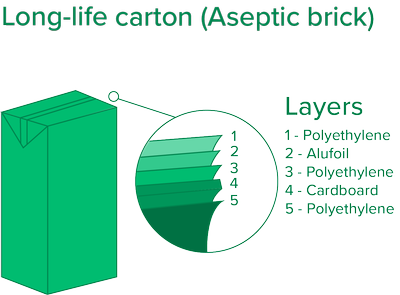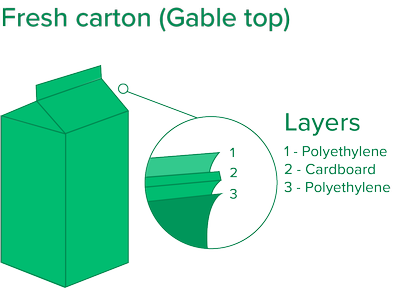Brought to you by
Tetra Pak’s approach to sustainability is shaped by its brand promise to ‘protect what’s good’. This encompasses the importance of protecting food, people and futures, for which driving environmental excellence is fundamental. Find out more.
For most Australians, cartons containing fresh products that are found in the fridge at stores can be recycled at home. Long-life cartons such as long-life milk (found on shelves in stores) are not accepted by all councils for recycling.
WHY SHOULD I RECYCLE MY CARTONS?
Over one billion beverage cartons are used each year in Australia. They’re made from a material called liquid paperboard (LPB), which makes up the largest proportion of the packaging – about 88% of a Tetra Pak 1 litre fresh milk carton for example. When the cartons are recycled, the materials are used to make new paper and cardboard products, keeping resources in use and out of landfills.
The lightweight nature of cartons means they require less energy to transport and refrigerate than other beverage packaging.
WHAT HAPPENS TO MY CARTONS WHEN I RECYCLE THEM?
Ensure cartons are empty and flattened before placing them loosely in your recycling bin. By flattening your cartons, you will help the carton reach the paper and cardboard recycling stream at the sorting facility. From there the carton can be recycled into new paper products like cardboard boxes.
Cartons collected through Container Deposit Schemes are more likely to be turned into paper products with a higher value such as paper towels. This is because the collection streams are separated, reducing contamination from other recycled products like plastic and glass bottles.
Learn more about carton recycling.
CONTAINER DEPOSIT SCHEMES
Flavoured milk and juice cartons under 1 litre are accepted for recycling in states that have Container Deposit Schemes (CDS). This includes both long-life (foil lined) and fresh (non-foil lined) cartons.
Find out more about CDS including what’s available and accepted in your state.
WHAT’S THE DIFFERENCE BETWEEN FRESH AND LONG-LIFE CARTONS?
For more than 60 years, liquid paperboard has been used to package a wide range of beverages and foods including milk, juice, cream, custard, sauces and soups.
Cartons containing fresh products (non-foil lined):
- These cartons have gable tops and are generally found in the fridge at stores.
- They are made from a layer of paperboard sandwiched between two layers of very thin plastic.
- Fresh cartons are accepted for recycling by most councils in Australia. Search your postcode above to find out whether you can recycle these cartons in your household recycling bin.
Long-life cartons (foil lined):
- These cartons are generally brick-shaped (called aseptic bricks) and contain long-life products such as long-life milk. They can be found on shelves in stores (generally not in the fridge).
- Aseptic bricks (UHT or long-life packs) are made from paperboard with a thin plastic layer on the exterior and interior of the carton, as well as a very thin aluminium foil layer on the interior to keep the contents fresh for long periods of time without the need for any preservatives.
- The products in the cartons are sterilised before being packaged and, as the cartons fully seal the contents, they do not need to be refrigerated before opening. This results in savings in energy during storage and transport.
- Foil lined cartons are not accepted for recycling by some councils in Australia. Search your postcode above to find out whether you can recycle these cartons in your household recycling bin.
HOW CAN I TELL THE DIFFERENCE?
Generally, long-life cartons are shaped like bricks (i.e., they don’t have a gable top), have a foil lining and not kept in the fridge in supermarkets. If you’re not sure whether your carton has a foil lining, use scissors to make a small cut at the top of your carton. If there is a silver lining inside the carton, the carton is foil lined.




